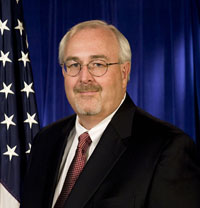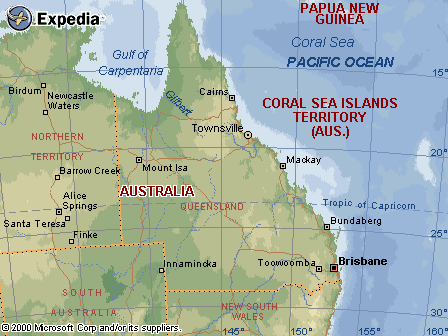After bombs exploded at the Boston Marathon, April 15, 2013, the FBI and the Boston Police tracked down the alleged terrorists, who in the course of their flight killed a cop at MIT, hijacked a Mercedes, fired and threw bombs at police, and tried to ram the police with the stolen car. Continue reading
Author Archives: Jonathan Soroko
Low-Tech Solutions: Reflective Traffic Cone with Alarm
No IP address, no WiFi, works in a power failure, warns workers and drivers with a loud (124 db) signal:
SonoBlaster(R) Work Zone Intrusion Alarm – SonoBlaster® is an impact-activated safety device that warns work crews and errant vehicle drivers simultaneously to help prevent crashes and injuries in work zones. The NCHRP 350 accepted SonoBlaster® mounts on typical work zone barricades, cones, drums, delineators, A-frames and other barriers. Upon impact of an errant vehicle, the SonoBlaster’s built-in CO2 powered horn blasts at 125 dB to signal workers that their protective zone has been violated, giving them critical reaction time to move out of harms way.
From the webpage of the manufacturer, Transpo Industries.
New vulnerabilities exposed in cyberwar attacks
From Details Emerge About Syrian Electronic Army’s Recent Exploits , on the Bits Blog of The New York Times, by Nick Bilton and Nicole Perlroth:
This week, after the parody site became the latest publication to have its Twitter account hacked by the Syrian Electronic Army, The Onion took a more serious note, explaining in a detailed blog post how the company’s account was hacked, and warning others how to avoid the exploit. Continue reading
How jihadists schedule terrorist attacks – John Hudson at Foreign Policy
Image following, courtesy United States Army, is of aftermath of a bus bombing in Iraq on 17 August, 2005, at about 0750 local time.

John Hudson, writing at Foreign Policy, makes a strong case that calendar day (month/day) is not a useful predictor of jihadist attacks. From “How jihadists schedule terrorist attacks“:
On Friday, the Boston Police Department announced plans to beef up security during the city’s Fourth of July festivities in the wake of new remarks from Boston bombing suspect Dzhokhar Tsarnaev that he and his brother originally scheduled a bombing attack for Independence Day. The reference has renewed interest in the symbolic scheduling of terrorist strikes against the West. Continue reading
FAA dismissing weather spotters who aid AirTraffic controllers
FAA plan to terminate airport weather observers raises travel safety concerns – FAA plan to terminate airport weather observers raises travel safety concerns (WaPo)
Garry’s email
In the spirit of making Guv’mint less of a burden on its o’er taxed
citizens, the FAA has opined that traffic controllers can look out the
window as well as weather observers, so you only have to pay one of the
bunch.
But on a nice, hot, July afternoon along the Atlantic shore, with the
cumulonimbus topping off at 20K and warm air advection shooting up to
the tropopause, you think JFK/LGA/EWR air traffic controllers will
have the time to plot developing wind shear? When fish-tailing planes
are keeping them – oh – somewhat preoccupied?
Sometimes, a little redundancy is OK.
FAA plan to terminate airport weather observers raises travel safety concerns
(Washington Post – Jason Samenow)
GRO
PS – On the other hand, if the air traffic controllers can’t cope,
they’ll just have to close airports more often, so airlines have to
pick up the tab on diverted equipment and crews, and passengers on the
cost of being at the wrong airport, so all of the money that FAA saves
gets spent in spades in the private sector. Plus some. I’m sure
everyone will be pleased…
Jon’s comment:
Frontline: “Top Secret America” After the Boston Bombings
Frontline, the WGBH/PBS investigative news show, will air “Top Secret America” After the Boston Bombings tonight on PBS stations. Local station listings can be found here.
Have the hundreds of billions of dollars spent since Sept. 11 on counterterrorism efforts in America made us safer?
In response to the recent terrorist bombings in Boston, FRONTLINE will take a definitive look at that timely, urgent question next Tuesday, April 30, in Top Secret America – 9/11 to the Boston Bombings, an updated version of our film which originally aired in September 2011. Pulitzer Prize-winning reporter Dana Priest traces the journey from 9/11 to the marathon bombings, examines efforts to improve information sharing among federal agencies tasked with keeping us safe and investigates the secret history of the 12-year battle against terrorism.
Solar Impulse solar-powered airplane: final test flight
Image via EvWorld.Com:
This ultralight and ultrasilent solar and battery powered plane flew over San Francisco, 4/24/13. It previously flew for 26 hours straight, taking off from it’s home base in Payerne, Switzerland, Wednesday, July 7, 2010 at 7:00 AM and landing Thursday, July 8, 2010 at 9:06 AM.
Continue reading
APNewsBreak: Russia caught bomb suspect on wiretap – Yahoo! News
Russian authorities withheld information from the FBI while asking for FBI assistance. If this is what’s been allowed into the public record, it’s not a big leap to think that Russian authorities, perhaps not the most trustworthy parties on the international stage, know (and knew) even more:
WASHINGTON AP — Russian authorities secretly recorded a telephone conversation in 2011 in which one of the Boston bombing suspects vaguel
y discussed jihad with his mother, officials said Saturday, days after the U.S. government finally received details about the call.In another conversation, the mother
of now-dead bombing suspect Tamerlan Tsarnaev was recorded talking to someone in southern Russia who is under FBI investigation in an unrelated case, officials said.The conversations are significant because, had they been revealed earlier, they might have been enough evidence for the FBI to initiate a more thorough investigation of the Tsarnaev
family.As it was, Russian authorities told the FBI only that they had concerns that Tamerlan and his mother were religious extremists. With no additional information, the FBI conducted a limited inquiry and closed the case in June 2011.Two years later, authorities say Tamerlan and his brother, Dzhohkar, detonated two homemade bombs near the finish line of the Boston Marathon, killing three and injuring more than 260. Tamerlan was killed in a police shootout and Dzhohkar is under arrest.In the past week, Russian authorities turned over to the United States information it had on Tamerlan and his mother, Zubeidat Tsarnaeva. The Tsarnaevs are ethnic Chechens who emigrated from southern Russia to the Boston area over the past 11 years.Even had the FBI received the information from the Russian wiretaps earlier, it’s not clear that the government could have prevented the attack.In early 2011, the Russian FSB internal security service intercepted a conversation between Tamerlan and his mother vaguely discussing jihad, according to U.S. officials who spoke on condition of anonymity because they were not authorized to discuss the investigation with reporters.The two discussed the possibility of Tamerlan going to Palestine, but he told his mother he didn’t speak the language there, according to the officials, who reviewed the information Russia shared with the U.S.In a second call, Zubeidat Tsarnaeva spoke with a man in the Caucasus region of Russia who was under FBI investigation. Jacqueline Maguire, a spokeswoman for the FBI’s Washington Field Office, where that investigation was based, declined to comment.
via APNewsBreak: Russia caught bomb suspect on wiretap – Yahoo! News.
Electric charging on moving bicycle
Using a mounted (stationary) bicycle to generate electricity has been around for some time, as has using bicycles to power bicycle accessories, particularly lights. A new technology enables charging various devices while still using a bicycle for transportation. If this can evolve into a reliable means for charging communications devices and, say, flashlights, we’d have one more means of keeping things going during power failures.
The limits of network security: tension between convenience and safety
Long ago, 2000, and far away, in Australia, a malevolent hacker targeted the sewerage system. Courtesy of the site AssembleIt.Net, excerpted from Australia’s Hacked History
In April 2000 a man, Vitek Boden was arrested and charged with offences relating to the unlawful entry into Maroochy Shire Council’s sewerage system and environmental damage. His attack via wireless technology altered electronic data that led to malfunctions of the sewerage system. This caused a clean up cost of $13,110 and untold damage to the environment. The Crown’s case against Boden relied heavily on circumstantial evidence which exposed several areas for criticism for the defendant.
Lindsey Graham, Peter King, Michael McCaul Blame FBI for Boston Bombing. Graham Backtracks
National Incident Map – quick visual overview
NationalIncidentMap.com has, using a mix of feeds and twitter posts from volunteers, created constantly updated maps, focused on several types of risk with a time-frame of the previous 24 hours. It’s not exhaustive, but it’s a good demonstration of what’s possible with crowdsourcing and aggregation. We’re not sure this could be comprehensive and complete without at least some full-time staff – but it’s still useful. There are also links to the same data in list form, and each incident market includes some data about the incident which it represents.
[imagebrowser id=108]
National Incident Map is also looking for more volunteers; their pitch, from their welcome page, appears below:
National Incident Map – quick visual overview
DebateGraph.org: visualization and collaboration tools
Debategraph is a software tool with applications for addressing, defining and attacking many types of problems in many ways. Here’s one of their interactive maps on epidemiology:
Who’s using it? Apparently the White House, CNN, the Prime Minister and the Foreign Office in the United Kingdom. A concept map explaining DebateGraph itself appears below.





